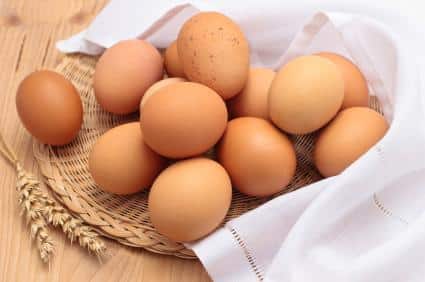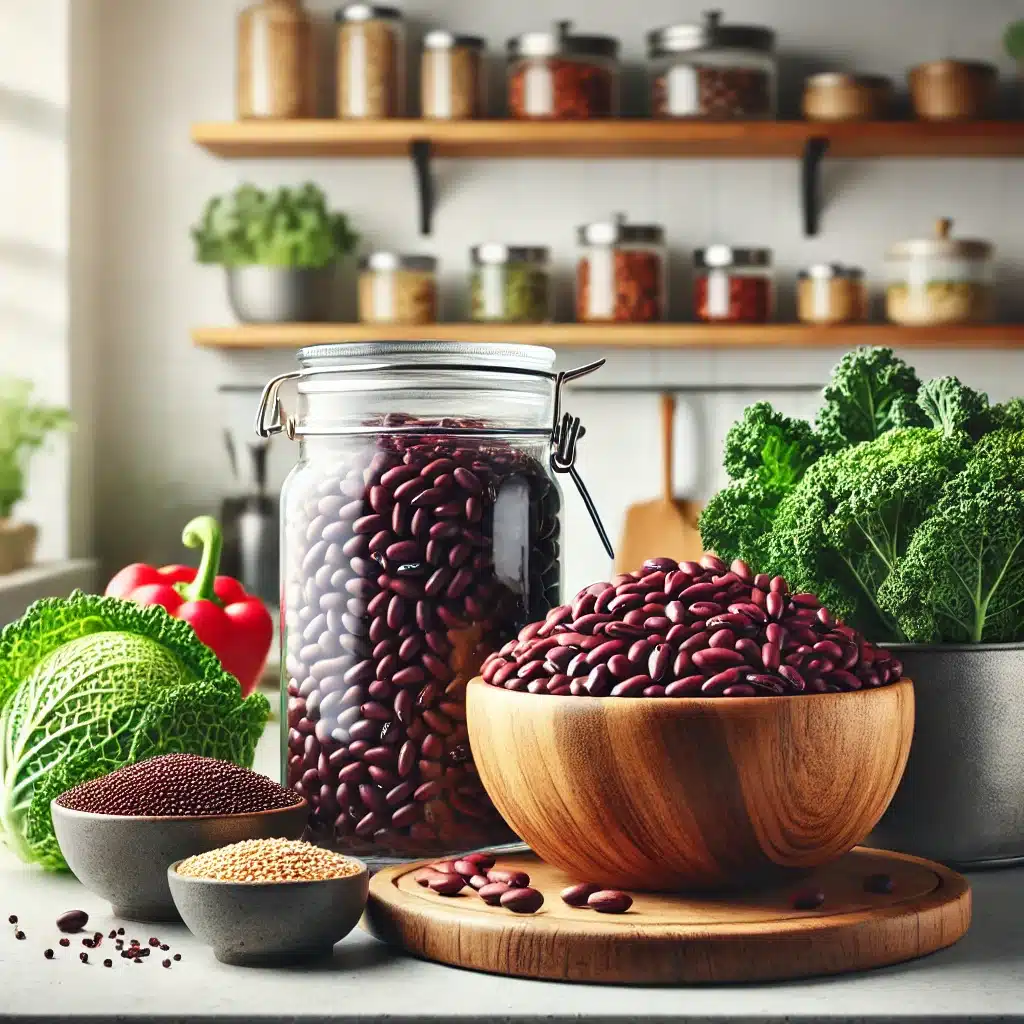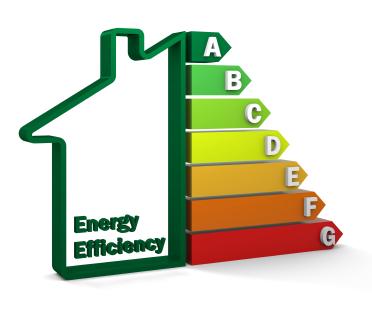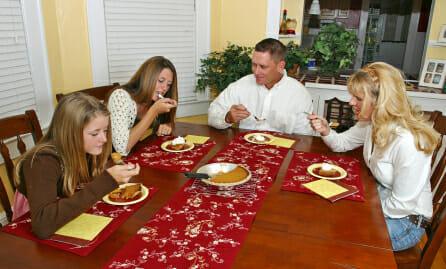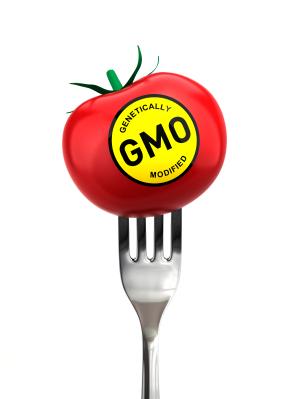Editor’s note: This article is for informational purposes only. Please follow all safe food handling processes and proper food preparation methods.
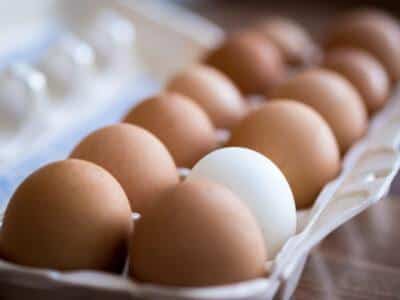
You’ve stashed away wheat, sugar, and oil, and you’ve canned more quarts of beans, peaches, tomatoes, and pears than you care to remember. If you’re like me, though, one item you might have overlooked is eggs. We often take this inexpensive, widely available staple food for granted, but what would happen if you didn’t have access to a store or a chicken coop?
Eggs are an essential ingredient in most baked goods, adding moisture, tenderness, and texture. They’re also one of the cheapest sources of protein around. They provide B12, folate, and vitamin D—nutrients hard to find in other stored foods.
Buying Powdered Eggs
Recently, I’ve become interested in storing powdered or dehydrated eggs. These products are made by washing, filtering, and chilling fresh eggs to kill the bacteria. The eggs are then spray-dried, which is the same process used for making powdered milk. Some companies also add a filler to prevent caking. Any bacteria, such as Salmonella, are killed during the drying process. Dried eggs don’t need refrigeration, but like most food storage products, are best stored in a cool, dry location.
In addition to their benefits as a food storage item, powdered eggs work well for camping and backpacking trips. No more crushed eggs or packing jars of raw eggs, and they take up much less room than whole, fresh eggs. I also like to keep powdered eggs on hand for those inevitable moments, halfway through a baking project, when I realize I’m out of eggs.
Many online retailers sell powdered eggs. For about $20 or so, you can get two and a half pounds of powder—equivalent to nearly 100 eggs. It’s a bit more expensive than buying fresh eggs at the store, but it’s a price worth paying for emergency use. Even Amazon.com sells dehydrated eggs, and in some areas, you’ll find them at retail stores like Wal-Mart. Some retailers also offer powdered eggs in bulk.
Unopened cans of eggs stay fresh for three to five years, while opened cans are good for one year. To reconstitute the eggs, simply mix two tablespoons of dry egg mix with four tablespoons water. Some sources suggest a one-to-one ratio of egg powder to water, so experiment until you get your desired result. Dried, powdered eggs can be used in any recipe calling for eggs, including scrambled eggs, French toast, powdered mixes, and baking.
Making Your Own Powdered Eggs
If you’ve got a chicken coop with more than two or three chickens, you’ve probably got more eggs than you know what to do with. Why not turn some of those eggs into powdered eggs for long-term, emergency storage? Here’s how: Wash one dozen fresh eggs. Crack them into a large bowl and whisk them until scrambled. Pour the scrambled eggs onto fruit leather trays and dehydrate them in a food dryer at 145 degrees. Dry them until they are hard and brittle, typically two to three hours. Cool slightly and break the pieces into small chunks. Blend the chunks in a food processor or blender until very smooth. Store in plastic bags in a cool, dry place or in the refrigerator or freezer.
I’ve read some recipes that require you to cook the eggs in a skillet before drying them to kill any bacteria. Feel free to use this option, if you prefer, but keep in mind that any oil you use in the skillet might go rancid in storage. Dried eggs made with oil must be refrigerated and used more quickly.
How To Use Powdered Eggs
If you’ve got kids, using food storage items often becomes a covert mission. You mix powdered milk with fresh milk to disguise its taste and add dried vegetables to pasta sauces and soups. Powdered eggs require similar strategies until your family becomes accustomed to them. Use them first in powdered mixes, such as pancake or muffin mixes. Add them to cookies and banana bread. Later, use them in fresh, flavored egg dishes, such as French toast or egg casseroles. Finally, try powdered eggs in omelets and scrambled eggs. Powdered eggs actually taste very good, but like all dried foods, they’re not exactly like their fresh counterpart.
This 90 serving emergency food storage container has 9 different just-add-water gourmet meals!
A note: When using powdered eggs in recipes, you don’t have to mix the eggs with water first. Simply add the powder and the appropriate amount of water directly to the recipe.Here are a few ideas for using powdered eggs:
Whole-Grain Pancake Mix
- 4 cups whole-wheat flour
- 4 cups regular flour
- ½ cup sugar
- 2 teaspoons salt
- 4 teaspoons baking powder
- ½ cup powdered egg
- 2 tablespoons dried banana powder (optional—blend dried banana chips in a blender or food processor to make it)
Combine all the ingredients in a large bowl and store in an airtight container. To make pancakes, mix one cup mix with one cup milk, ¼ cup oil or melted butter, and four tablespoons water. Whisk to make a thin batter and cook on a skillet.
French Toast
- ¼ cup powdered egg
- ½ cup water
- ½ cup milk
- ¼ cup orange juice
- 1 teaspoon vanilla
- 1 teaspoon cinnamon
- 1 loaf bread
Whisk the powdered egg, water, milk, juice, vanilla, and cinnamon together in a shallow bowl or pie pan. Dip the bread in the egg mixture and fry on a skillet until browned on both sides. Serve with syrup or fruit.
Chocolate Chip Cookies
- 2 sticks butter, softened
- 1 cup white sugar
- 1 cup brown sugar
- ¼ cup powdered egg
- ½ cup water
- 1 teaspoon vanilla
- 1 cup flour
- 1 cup whole-wheat flour
- ½ teaspoon salt
- 1 teaspoon baking soda
- 2 cups old-fashioned oats
- 1 cup chocolate chips
Preheat the oven to 350 degrees. Cream the butter and sugars in a large mixing bowl. Add the powdered egg, water, and vanilla and beat again. Sift the flours, salt, and baking soda and stir into the egg mixture. Add the oats and chocolate chips and stir well. Drop by teaspoonfuls onto a cookie sheet and bake for eight minutes.
©2013 Off the Grid News


